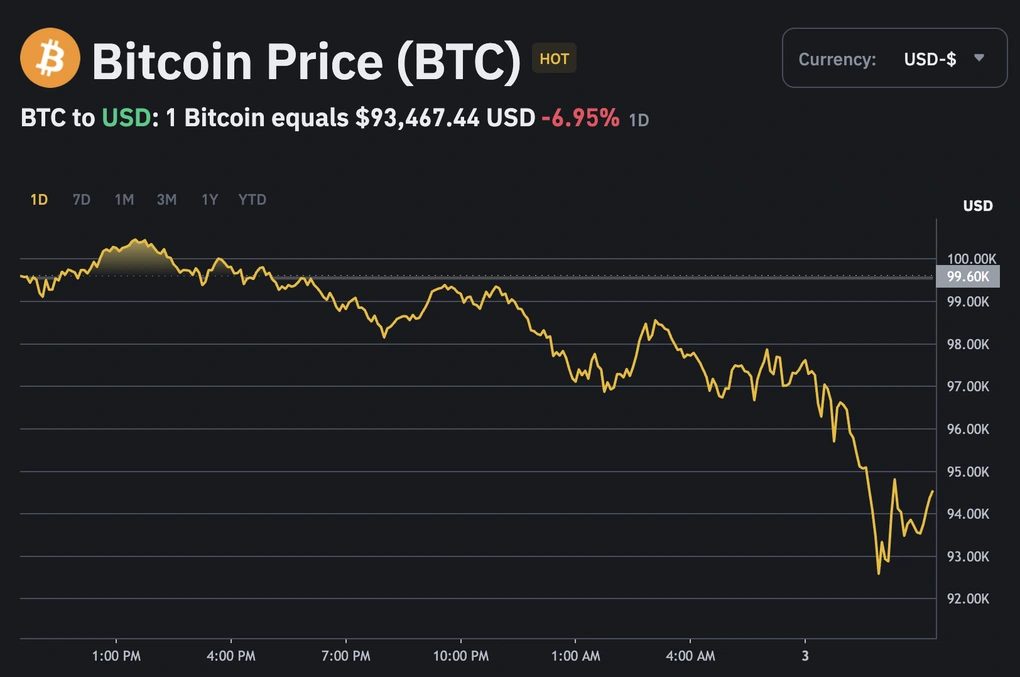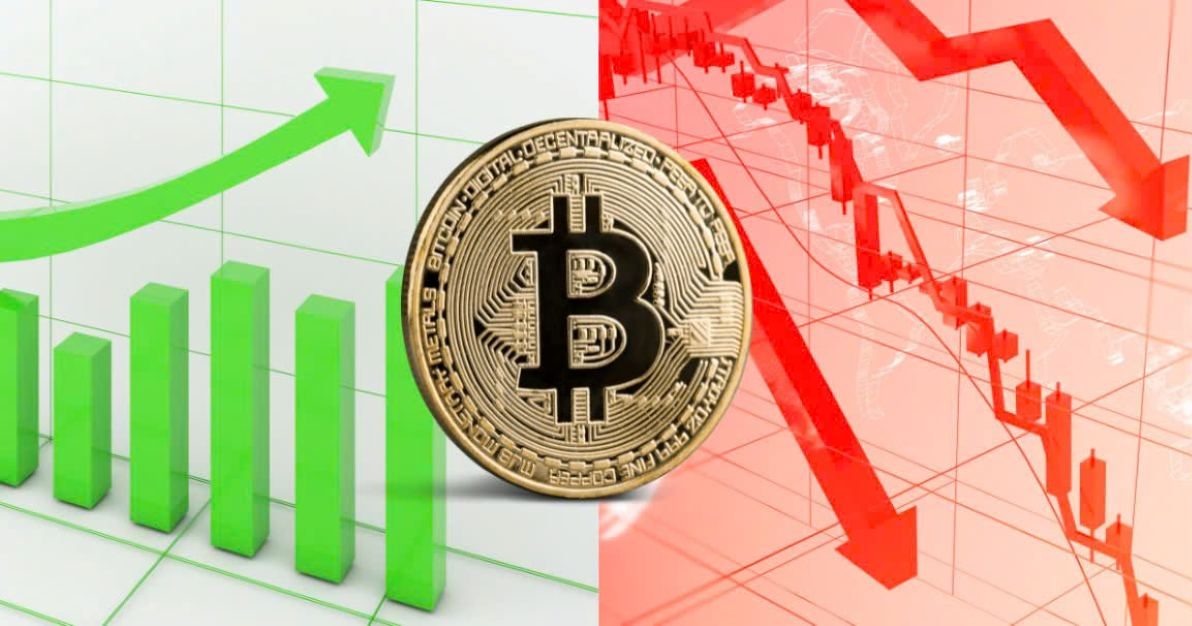The financial world is reeling as The Tariff Wave of Trump – a 25% import tax on goods from Canada and Mexico set to take effect on March 3, 2025 – sends shockwaves through global markets. Bitcoin, which had been holding steady at $94,000, has tumbled below $86,000, triggering widespread panic among crypto investors. The broader financial ecosystem is feeling the squeeze, with risk-sensitive assets facing a turbulent ride. As uncertainty grips the market, investors are left wondering: is this a temporary setback or the start of a deeper crisis?
Contents
Trump’s Tariff Strike: A Trade War Revival?
In a bold economic maneuver, former President Donald Trump has revived his signature “America First” trade policy, slapping a hefty 25% tariff on imports from Canada and Mexico. The move, aimed at protecting domestic manufacturing and reducing the trade deficit, has sparked fears of retaliatory measures and a broader trade conflict. Echoing his previous tariff battles during his first term, Trump’s latest decision could disrupt supply chains, push inflation higher, and rattle financial markets.
The tariffs come at a delicate time for the global economy, which has been navigating post-pandemic recovery, inflationary pressures, and geopolitical tensions. The reaction from Wall Street has been swift-markets have turned volatile, with stocks slipping and investors moving towards safer assets. However, cryptocurrencies, often seen as a hedge against traditional market instability, have not been spared.
Bitcoin Takes a Hit: A $200 Billion Market Shake-Up
The crypto market has been in turmoil since Trump’s announcement, with Bitcoin plunging from $94,000 to below $86,000-an 8-10% decline within 24 hours on March 3, 2025. This steep drop follows an earlier surge in Bitcoin’s value, which had peaked at $109,000 after Trump’s January 20, 2025, inauguration, fueled by optimism over his historically pro-crypto stance.
The sell-off has not been limited to Bitcoin. Ethereum (-8.3%), Solana (-5.7%), and XRP (-6.8%) have all suffered, with the total cryptocurrency market cap shrinking by $200 billion in just two days, falling to $1.57 trillion. The broader market panic reflects a flight from high-risk investments as traders brace for further economic uncertainty.

Investor Sentiment: From Euphoria to Fear
The market reaction has been swift and brutal, with the Crypto Fear & Greed Index plunging to 10 points-its lowest level in two years. This level of fear surpasses even the aftermath of the Bybit hack, which resulted in a $1.46 billion loss. Once seen as “digital gold” during periods of economic instability, Bitcoin’s decline raises concerns about its resilience in the face of macroeconomic turmoil.

However, some investors view this as a golden buying opportunity. Ben Simpson, founder of Collective Shift, notes, “Historically, when fear dominates, it’s often the best time to accumulate assets.” Others believe decentralized finance (DeFi) could see a resurgence if confidence in traditional financial systems wanes due to the tariff-induced economic strain.
The Road Ahead: More Volatility or a Rebound?
With The Tariff Wave of Trump set to officially take effect on March 3, 2025, market analysts warn of further downside risk. If panic selling accelerates, Bitcoin could slip below $80,000, intensifying the financial storm. Institutional investors may also scale back exposure, adding to the pressure.
However, there are also signs of potential recovery. A previous tariff delay on February 3, 2025, triggered a Bitcoin rally to $100,000, suggesting that a policy shift or softened stance from the administration could restore investor confidence. Speculation is also growing that the U.S. government could turn to Bitcoin as a hedge against economic instability, further fueling potential upward momentum.
With The Tariff Wave of Trump shaking up global markets, investors must tread carefully. Here are some key strategies:
- Stay Informed: Keeping an eye on policy developments and market sentiment is crucial. Tariff negotiations, regulatory updates, and Federal Reserve decisions will all play a role in shaping the future.
- Risk Management: Conservative investors may opt to diversify portfolios, allocating funds into safer assets like stablecoins or gold while awaiting market stabilization.
- Long-Term Perspective: Bitcoin’s history is marked by steep declines followed by strong rebounds. For those with a high-risk tolerance, buying the dip could prove profitable in the long run.
- Wait for Signs of Stability: Cautious traders may prefer to sit on the sidelines until volatility subsides, looking for indicators of a trend reversal before re-entering the market.
A Defining Moment for Crypto
The Tariff Wave of Trump has sent shockwaves through financial markets, testing the resilience of Bitcoin and the broader crypto sector. Whether this is a temporary shake-up or the start of a prolonged downturn will depend on policy decisions and investor reactions in the coming weeks.
For now, one thing is certain: volatility is here to stay, and only those who stay ahead of the curve will come out on top.
Stay updated with the latest market insights and expert analysis by visiting our website. Don’t miss crucial updates, follow Best Sniper Bots to navigate this financial storm effectively
